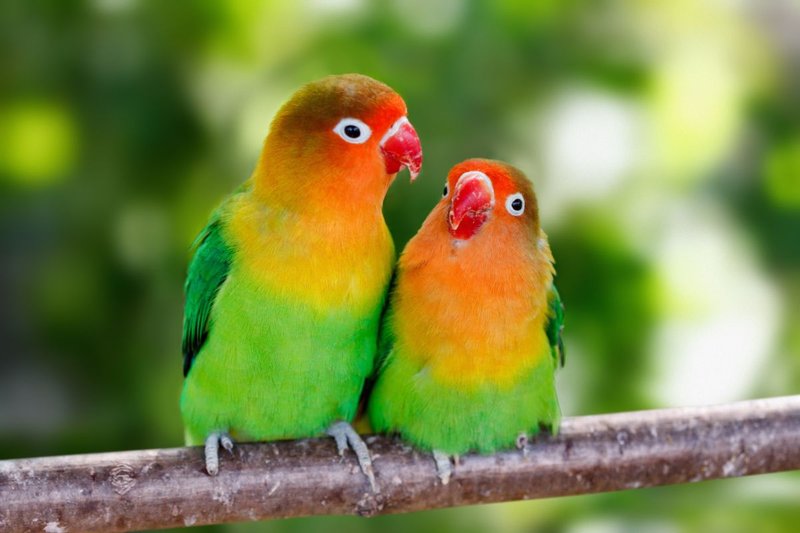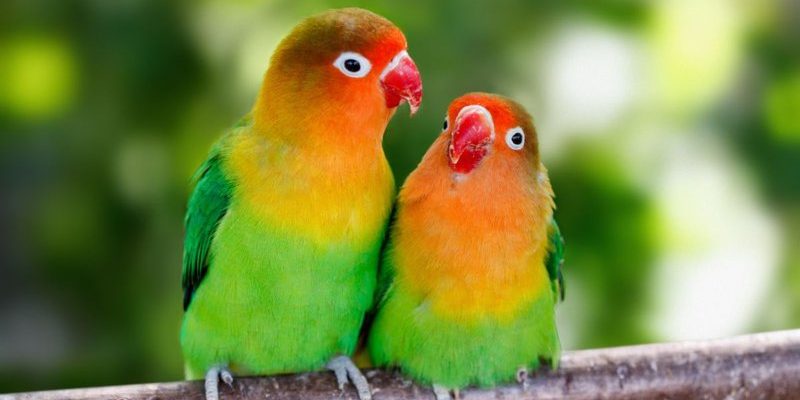
Imagine throwing a party with friends from different circles. Some might hit it off instantly, while others might not see eye to eye. That’s pretty much what you’re looking at when considering if lovebirds can live with other bird species. Let’s delve into the ups and downs of sharing a cage or space with these affectionate little companions and explore what you should keep in mind.
Understanding Lovebird Behavior
Before even thinking about pairing lovebirds with other bird species, it’s crucial to understand their unique behavior. Lovebirds are social creatures, usually found in the wild in flocks. They thrive on companionship, and this social nature often translates into their interactions with other pets. They tend to be very vocal, expressing themselves with a variety of chirps and whistles.
You might be wondering how this translates when they’re with other birds. Honestly, lovebirds can be a bit territorial. If they feel their space is being invaded, they might show signs of aggression. Think of them as little guards of their kingdom. It’s essential to give them time to adjust to any new bird entering their territory slowly.
Moreover, lovebirds have different personalities. Some might be more laid-back and accepting, while others can be a bit more feisty. Observing these traits will help you determine how they might react to a new companion.
Choosing Compatible Bird Species
When thinking about having lovebirds and other species cohabitate, it’s vital to choose the right companions. Generally, smaller birds tend to work better than larger ones due to size differences. Here are a few bird species that might be more compatible with lovebirds:
- Budgerigars (Budgies): These little parrots are social and can often get along with lovebirds if introduced properly.
- Cockatiels: Friendly and gentle, cockatiels can be a good match, but make sure they have enough space.
- Finches: These small birds are more independent, which may reduce the chances of conflict.
That said, it’s crucial to avoid pairing lovebirds with species known for aggression. Larger parrots, like macaws or African greys, could unintentionally harm your lovebirds due to their size and strength. Here’s the thing: always prioritize the safety and comfort of all your birds.
Introducing Lovebirds to Other Birds
The introduction phase can be a bit tricky. You wouldn’t want to throw two strangers together in a room and expect them to become best friends, right? It’s the same for lovebirds and other species. Here’s how to make the introduction smoother:
1. Separate Spaces: Start by placing the new bird in a separate cage near your lovebirds. This helps them get used to each other’s presence without direct contact.
2. Supervised Meetings: After a week or so, when they’ve had a chance to observe each other, you can allow short, supervised outings in a neutral space.
3. Monitor Body Language: Pay attention to how each bird is acting. If there’s a lot of puffing up, aggressive chirping, or pecking, it might be best to separate them and try again later.
4. Gradual Integration: If all goes well, you can gradually increase their time together. Always ensure there’s enough space so each bird can escape if it feels threatened.
The goal is to create a neutral environment where both birds feel safe and secure.
Environmental Considerations
Creating the right environment is just as important as the introduction process. Lovebirds are known for their playful nature, so you’ll want to consider a few factors:
– Space: Make sure the cage is spacious enough for all your birds. Crowding can lead to stress and conflict.
– Shelves and Perches: Providing various perches and hiding spots can help your birds feel secure. Birds, like people, enjoy having their personal space.
– Cleanliness: Keep their living area clean. A dirty cage can lead to health problems, which can quickly escalate when you have multiple birds.
– Toys and Enrichment: Offering different toys will keep them entertained and reduce the likelihood of territorial disputes.
Remember, a happy bird is a healthy bird!
Signs of Stress in Lovebirds
While lovebirds can be social with other bird species, it’s essential to recognize signs of stress or discomfort. Each bird is unique, and they might show their feelings differently. Common signs of stress include:
– Excessive Vocalization: If your lovebird starts chirping incessantly, it might be feeling anxious or threatened.
– Aggressive Behavior: If your lovebird starts puffing up, lunging, or pecking at the other bird, it could feel its territory is being challenged.
– Changes in Eating Habits: A bird that loses interest in food or changes its eating habits can be a sign of stress.
If you notice any of these signs, it might be necessary to rethink your living arrangements. Your pet’s comfort and well-being should always come first.
Final Thoughts on Keeping Lovebirds with Other Birds
So, can lovebirds live with other bird species? The answer isn’t black and white. There’s great potential for lovebirds and other birds to coexist happily, but it takes some planning and careful observation. By understanding their behavior, choosing compatible species, and monitoring their interactions, you can create a harmonious environment.
Above all, be patient. Just like people, birds need time to adjust to new friends. It’s a journey of love and understanding, and with the right approach, you might just find joy in a bustling, feathered household. Remember, every bird is unique, and your role as their caregiver is crucial in ensuring their happiness and safety.

